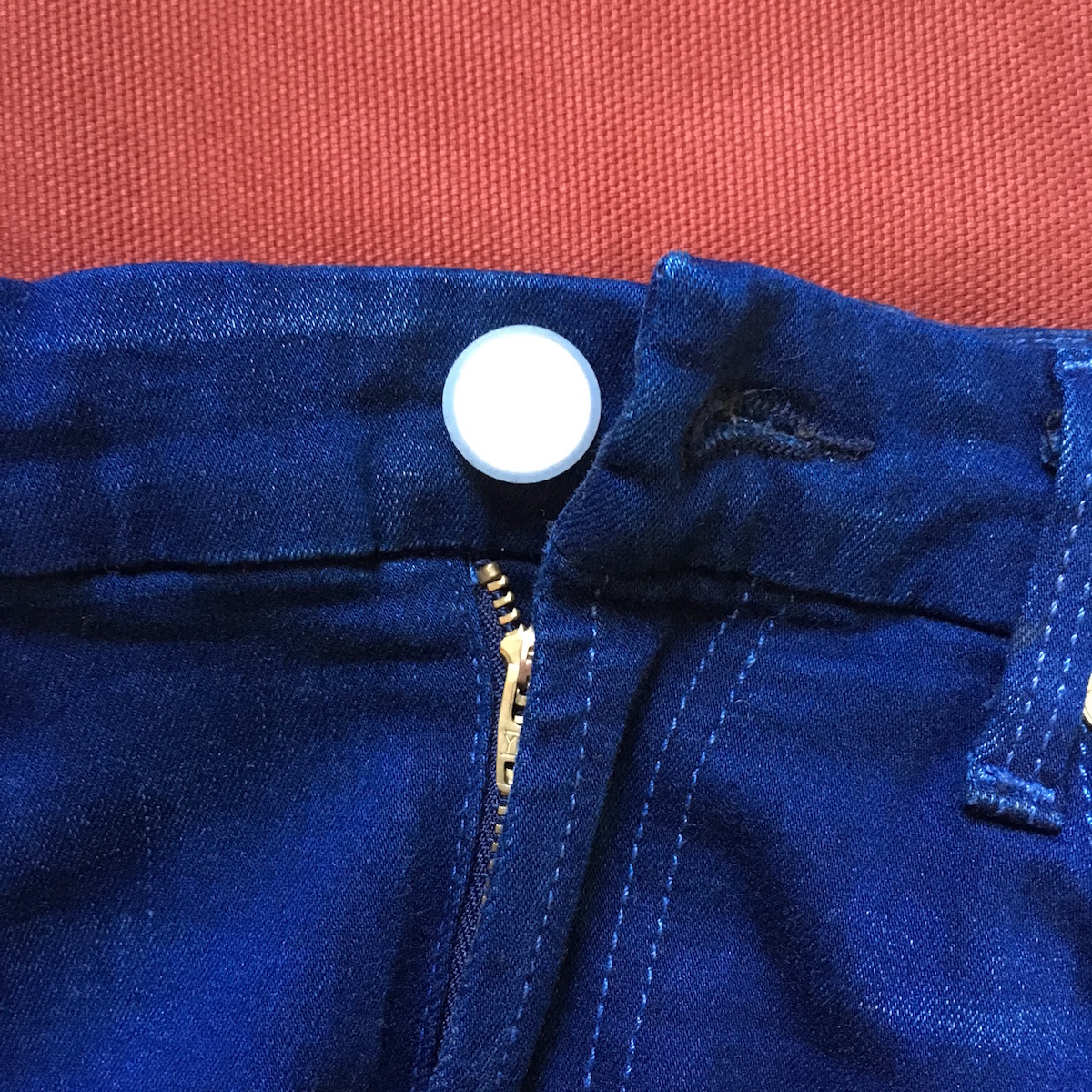Earlier this year, I reviewed some Everlane T-shirts and noticed that one of them had a small hole at the bottom in the front. This was not the first time a shirt developed a hole in this area. Perhaps it had something to do with my jeans. Was the button on my jeans rubbing my T-shirt?
Well, there’s a solution for that. A company out of the UK called Holé makes silicone button covers, and they sent me their product as a gift to try.
Holé gifted me their product for review. As always, all opinions are my own.

The package comes with four button covers — two in black and two transparent — and retails for £10.00 (about $13 USD). They have a smooth rubbery texture and are flexible.

Here’s what they look like from the back:

To get the button cover on your button, you kind stretch it and try to get it to latch onto one side of the button, then pull the rest of it on. This is not exactly an easy thing to do (at least for me). It took me about two minutes to install one cover.
Here’s a pair of jeans before Holé:

And here’s what it looks like with the transparent button cover on it:

The black cover blends in nicely with black jeans:

I’ve been trying them out for about four months. One thing that you have to get used to is that the Holé increases the thickness of your button, so make sure that you really pull the button all the way through your button hole. I had a habit of not doing this and would find my pants popping open suddenly! Ooops!
I leave the button covers on my jeans and just throw them in the wash. Since I air dry my jeans, they never go in the dryer. Silicone is typically heat-resistant — that’s why there are so many kitchen objects made out of silicone. So my guess is that it’s probably OK to put them in the dryer, but I haven’t tested that.
Now for the most important question: Do they help prevent holes in my shirts? Well, it’s kind of like eye cream. How do you know if something is working if it’s preventative? While I haven’t noticed any new holes in my shirts, it’s hard to say if they would have developed holes without the button covers. I guess the real way to test this out would be to have two identical outfits — one with the Holé and one without, and to wear them with the same frequency over a stretch of time. I wasn’t disciplined enough to do that.
As I received this product as a gift, I think it’s important to ask myself: would I have paid full price for this item? Probably. $13 is a small price to pay for the possibility of preventing holes in my shirts. I’ve definitely had more than $13 worth of shirts ruined by holes, so if there’s a chance that this product does what it says it does, then that’s money well spent. And if it’s not, it’s the cost of a lunch, so it’s not a big loss.
Even though I don’t know if they’re helping, they’re definitely not hurting, and they make sense to me, so I’m going to keep using them.





Hi, did your button covers work please?
Hi. It’s hard to know since it’s preventative. It’s a bit like using eye cream. Who really knows? But they seem fine? Haven’t noticed any holes in my shirts.